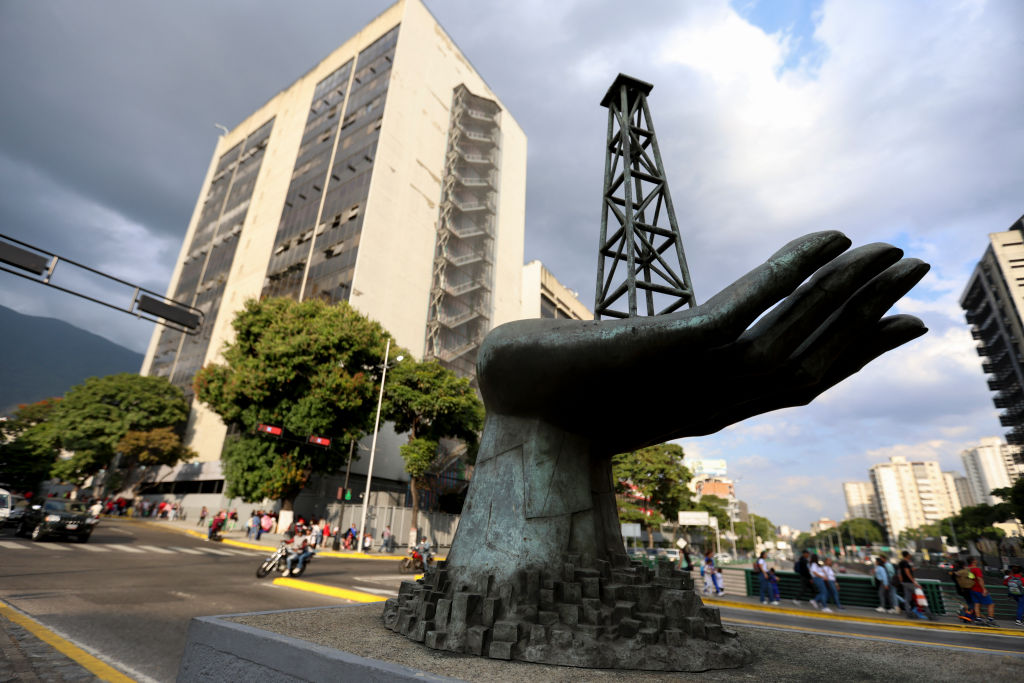China's Hunger; Latin America's Commodities
China's Hunger; Latin America's Commodities
Experts say China's appetite for commodities helps insulate Latin America against the sluggish U.S. economy. Others point to ways the region can take advantage of the windfall through reforms and infrastructure development.
While the U.S. economy continues to show signs of stalling, conjecture continues about how Asian-Latin American trade—and particularly China’s commodity hunger—may cushion Latin American economies. As a recent special report by the Economist explains, China now gobbles up half the world’s cement, a third of its steel, and a quarter of its aluminum. Although it remains behind the United States as an energy consumer, China's oil and natural gas consumption more than quadrupled over the past 25 years.
With China’s commodity demand on the rise, analysts see a buffer for Latin America economies from a U.S. downturn through Chinese hunger for products ranging from soya to copper to gas. “In our view, what happens in China is critical for [emerging market] economies,” said JPMorgan’s Joyce Chang in an AS/COA interview. Chinese trade with Latin America exploded in recent years, jumping from $15 billion in 2001 to $100 billion in 2007 and making China Latin America’s third largest trading partner.
Others have also cautioned of the dangers of dependence on China's economy. In an interview with Bloomberg, Deutsche Bank’s Guilherme Paiva warned that, in the second half of the year, Chinese inflation may present a bigger risk for Latin American than the current U.S. slowdown. In the case of Brazil—Latin America’s largest economy—commodity price drops would deal a blow to the Brazilian trade balance and threaten the real’s appreciation, writes leading Brazilian economist Eliana Cardozo for AS/COA's Viewpoints Americas. As events this week demonstrated, commodities markets could fall prey to volatility.
Moreover, experts caution that the region runs the risk of failing to appropriately benefit from the commodity windfall. “The suspicion is that the region is not taking advantage of the bonanza, and that the better conditions are in fact allowing politicians to postpone certain reforms,” Columbia University’s Guillermo Calvo told IDBAmérica. A YaleGlobal analysis of China’s hunger for Latin American commodities recommends that Latin American countries create transparency measures “as well as social- and environmental-impact management systems attached to commodity extraction.” The article emphasizes the need for investment in infrastructure development in Latin America.
China's influence and economic weight in places including Sudan and Myanmar has drawn international concern or condemnation. Yet, Chinese growth has had a largely positive impact on Latin America. Moreover, countries such as Argentina and Brazil seek a diversification of exports beyond commodities in trade dealings with China, notes the Economist. In Marchh 2008 testimony before the U.S.-China Economic and Security Review Commission, Cynthia A. Watson of the National War College described the ways that China has stepped up influence in the region on matters ranging from military ties to trade. But, she notes, "Latin America is exceptionally sensitive to the idea of any violations of its sovereignty by any major power."
Yet China is not the only Asian country with growing ties to Latin America. During COA’s “Latin America from the Asian Perspective” program, South Korea’s Minister of Economic Affairs Seok Yoing Choi noted that two-way trade between South Korea and Latin America has grown from $18.2 billion in 2004 to $30 billion in 2006. During Peruvian President Alan Garcia’s recent trip to Asia, Japan pledged $300 million in loans for Peruvian infrastructure development. And, as the Inter-American Development Bank’s Alberto Morales explained at a February AS/COA APEC event, Peru’s total trade has increased 30 percent since Peru joined APEC in 1998. In a recent article for the American Interest, AS/COA Senior Director of Policy Christopher Sabatini and COA Vice President Eric Farnsworth recommend expanding pan-Pacific trade agreements as a means to promote prosperity and open markets.








